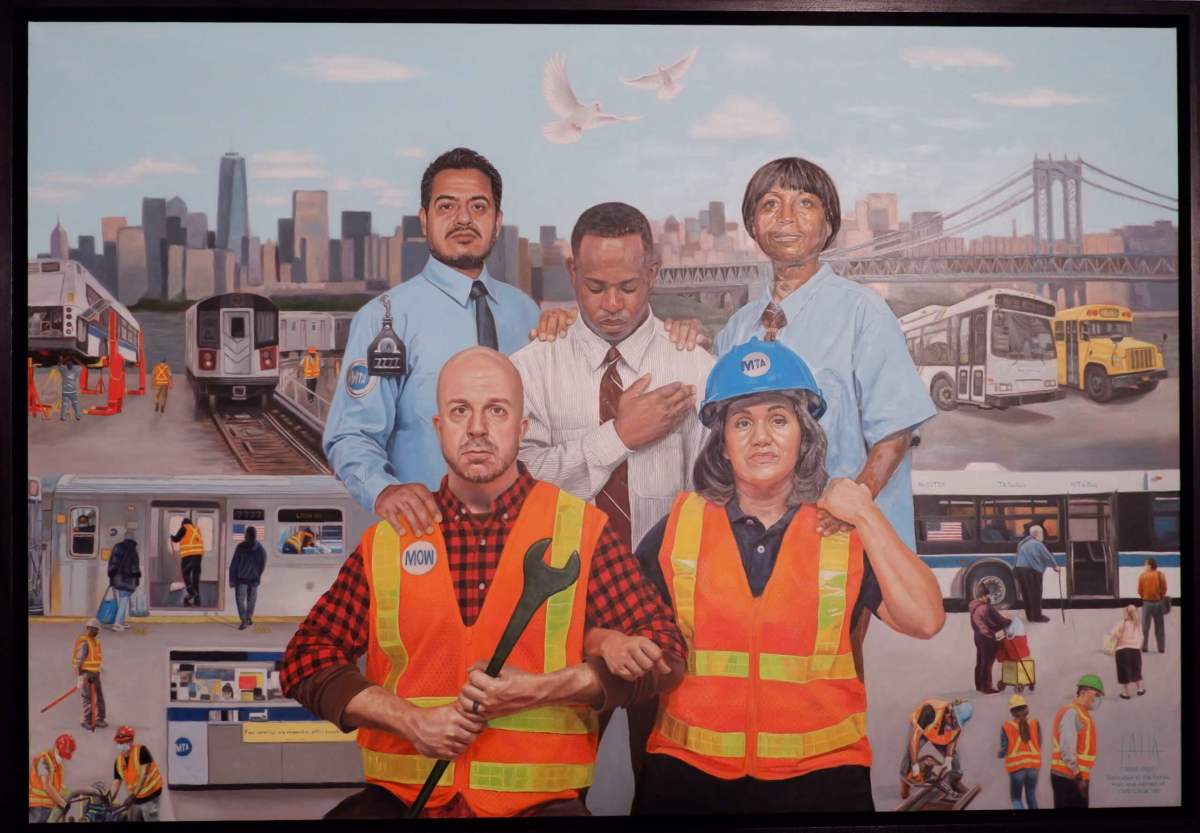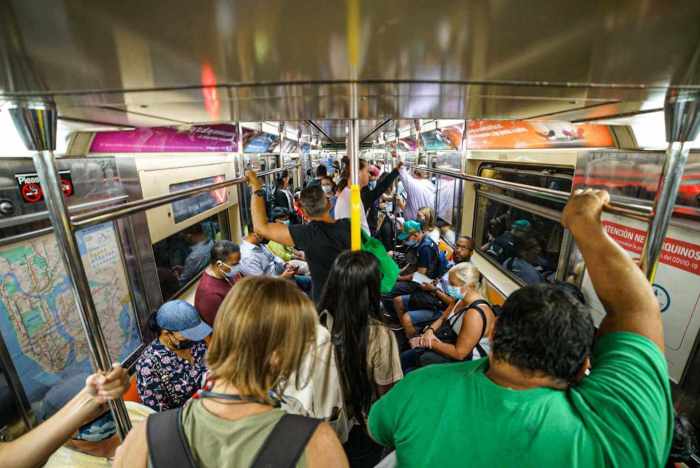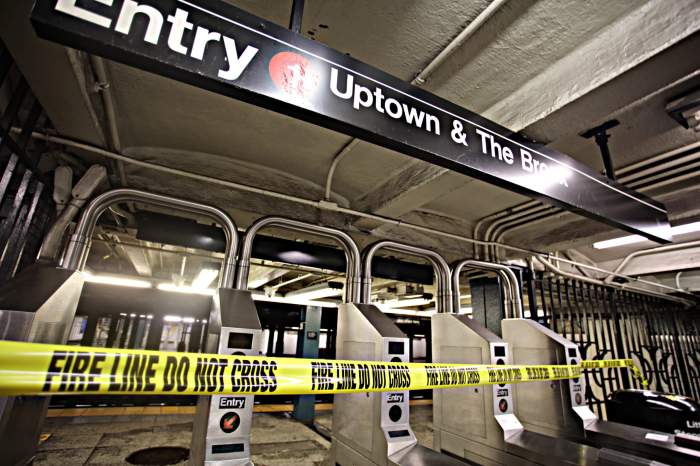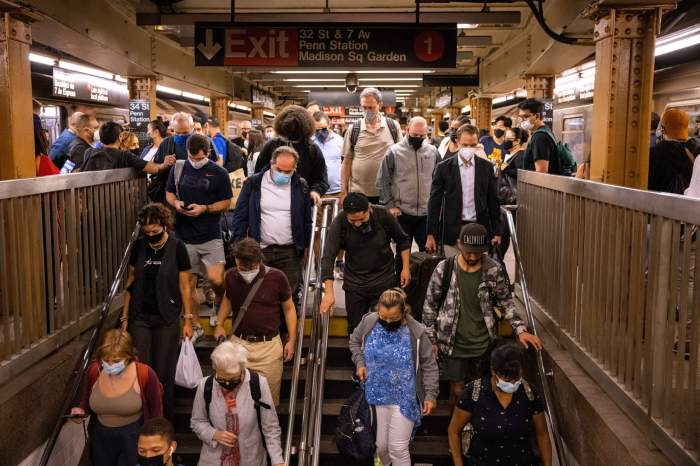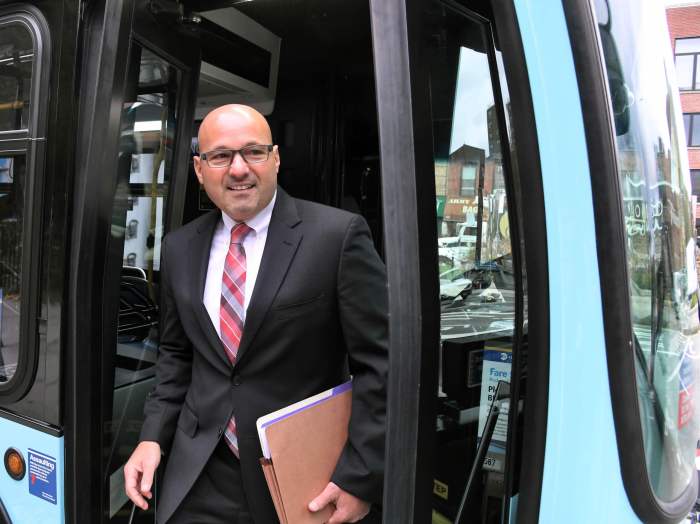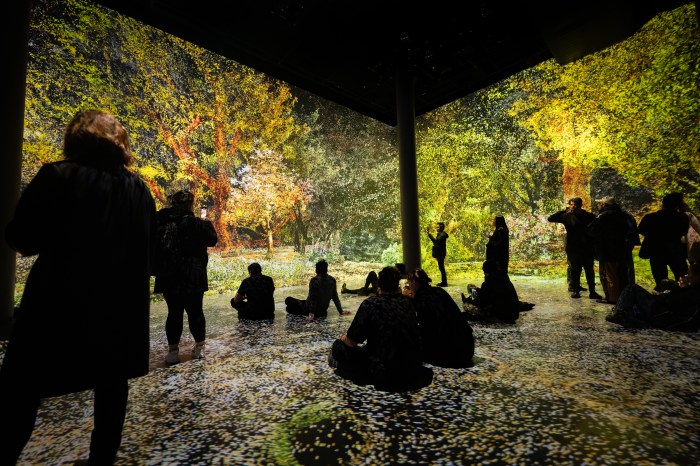New York City’s largest public transit union, Transport Workers Union Local 100, unveiled a memorial Thursday dedicated to the more than 100 transportation workers who died from COVID-19.
The tribute at their Brooklyn headquarters consists of a painting of transit workers and a map listing the 110 union members who succumbed to the virus honors the service of those who kept the Big Apple moving, according to the labor group’s leader.
“Transit workers truly gave new meaning to the words ‘essential worker’ during this pandemic,” said Local 100 President Tony Utano. “Our city, our union, can survive with empty office buildings, we can survive with shuttered restaurants and bars, we can live with government by Zoom. But we can’t survive without our public transit systems and our nation’s transportation infrastructure.”
The artwork was painted by Brooklyn artist Taha Clayton and features representatives of five union members in the uniforms worn by seven departments at the Metropolitan Transportation Authority, from subway and bus drivers to maintenance and car equipment workers.
A plaque with a map of the Five Boroughs bears the names and titles engraved of all Local 100 members who died from COVID-19, in addition to train operator Garrett Goble who was killed hone an arsonist lit a fire on his train in Harlem in May, 2020.
Their place of work is marked with an LED light.
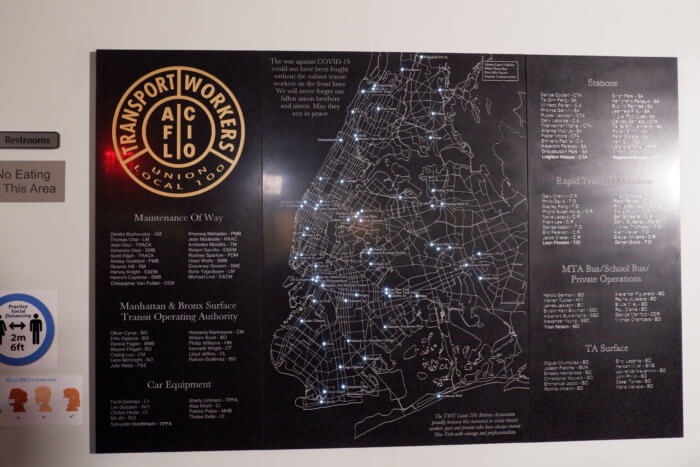
The union represents 41,000 members, the largest portion of the MTA’s almost 70,000 workers.
The public transit agency suffered a large number of deaths due to the pathogen, with 171 people dying of COVID-19.
Dozens of family members joined the ceremony at Local 100’s Union Hall on Montague Street in Brooklyn Heights, where heads of each division read out the names of the deceased.
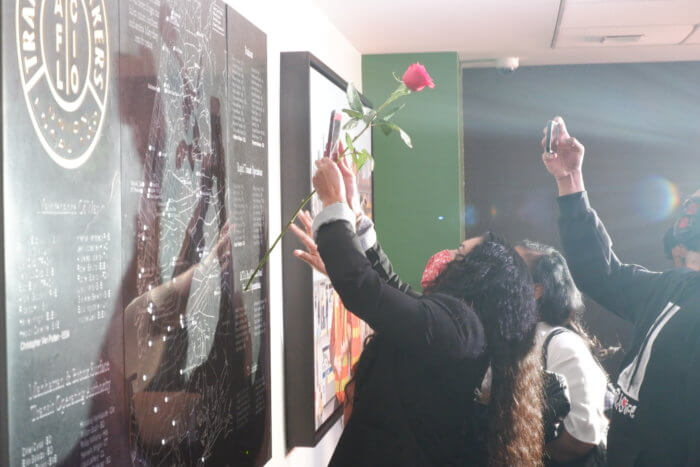
One wife of a fallen collecting agent, whose job it was to check on stations and MetroCard vending machines, was touched by the occasion.
“It was beautiful, it was very very beautiful. It touched my heart,” Norma Ferran told amNewYork Metro.
Her late husband Wilfredo Ferran worked in Brooklyn, the Bronx and Manhattan, but contracted COVID-19 in January and died soon afterward.
“He got it and then it took him in a week’s time,” Ferran said. “It took him fast, it was something unexpected.”



